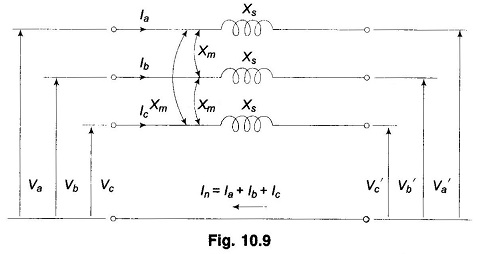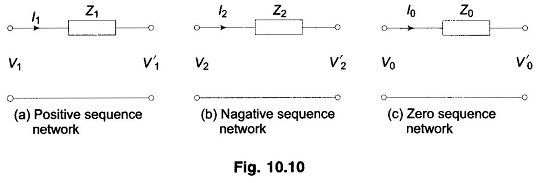Sequence Impedances of Transmission Lines:
Sequence Impedances of Transmission Lines – Figure 10.9 shows the circuit of a fully transposed line carrying unbalanced currents. The return path for In is sufficiently away for the mutual effect to be ignored.
Let
- Xs = self reactance of each line
- Xm = mutual reactance of any line pair
The following KVL equations can be written down from Fig. 10.9.
or in matrix form
or
or
or
Now
Thus Eq. (10.37) can be written as
wherein
We conclude that a fully transposed transmission has:
- equal positive and negative Sequence Impedances of Transmission Lines.
- zero sequence impedance much larger than the positive (or negative) Sequence Impedances (it is approximately 2.5 times).
It is further observed that the sequence circuit equations (10.42) are in decoupled form, i.e. there are no mutual sequence inductances. Equation (10.42) can be represented in network form as in Fig. 10.10.
The decoupling between sequence networks of a fully transposed transmission holds also in 3-phase synchronous machines and 3-phase transformers. This fact leads to considerable simplications in the use of symmetrical components method in unsymmetrical fault analysis.
In case of three static unbalanced impedances, coupling appears between sequence networks and the method is no more helpful than a straight forward 3-phase analysis.






